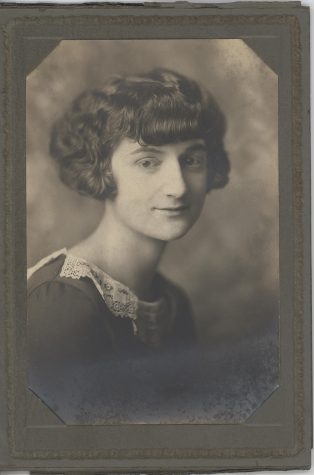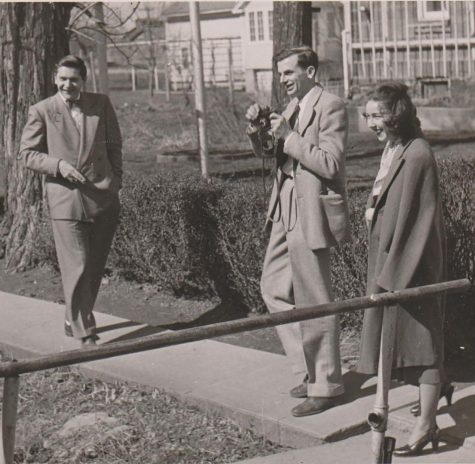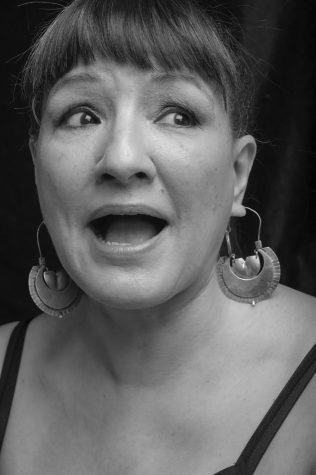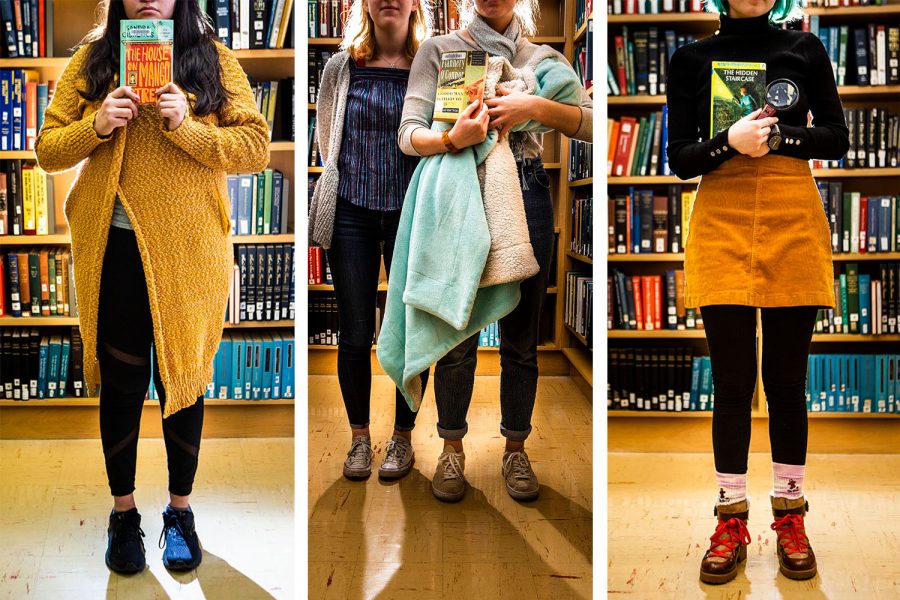Female writers make their marks at the Writing University through the decades
Famous for producing great writers, many of whom are women, the University of Iowa has hosted many big-name authors who come from different time periods, possess different writing styles, and lived through different experiences.
Several female authors made the University of Iowa their literary stomping grounds in the 20th and 21st Centuries. Whether they attended as undergraduates or through the Writers’ Workshop, they persevered through what was historically a male-driven campus. Mildred Benson, Flannery O’Connor, and Sandra Cisneros are just a few trailblazers to name, each leaving behind them a stack of novels and short stories that continue to make a mark on literature today.
Mildred Benson
Mildred Benson, the writer of the Nancy Drew series, enrolled at what was then called the State University of Iowa in the fall of 1922. She majored in English while leading an adventurous lifestyle. She was on the diving team, and wrote for The Daily Iowan and for the Hawkeye Yearbook. Benson was also the first person to graduate from the School of Journalism with a master’s degree, even though her thesis statement was the least of her priorities, said Rachel Black, a former archives assistant who created the Mysterious Mildred Benson website.
“She was actually writing a book for the Stratemeyer Syndicate, and she has this amazing quote where she essentially said, ‘I’m writing my book instead of my thesis. What are they gonna do — kick me out? I’m the only student they have,’” Black said.
Benson went on to work for publishing company Stratemeyer Syndicate as a ghost writer. Under the pseudonym of Carolyn Keene, she went on to write 23 of the first 30 Nancy Drew books, but not without some backlash. Benson wrote the first three books and built Nancy as an adventurous and smart young woman. Upon completion, she sent the books to the publisher, Edward Stratemeyer, who hated the character, Black said.

“He had concerns,” Black said. “He thought, ‘Oh, she’s much too [flippant]. No one’s going to connect with her, she’s not a lady.’ He decided to take a chance and published the books anyway.”
Unfortunately, Stratemeyer died two weeks before the books were published, never seeing the Nancy Drew series fly off the shelves.
“We’re looking at the 1920s, 1930s, I don’t know if there were a lot of strong female characters that women could relate to, or girls especially,” Black said. “She wasn’t at home sipping tea and knitting. I mean she was out there having adventures and living her life, and I think that really resonated with people because she [Nancy] was someone they could look up to.”
Not only did Benson write the Nancy Drew series, but she wrote other series and composed several of her own novels, ultimately penning a total of 130, Black said. The UI later recognized Benson as a distinguished alum, and even after her death, she continues to empower women and girls of each generation through Nancy Drew.
“Once you have an iconic character, one who has spoken to a lot of people, it doesn’t just stay with that group of people — they pass it down to their children,” Black said. “People look at her, no matter what age you are, and there’s a sense of nostalgia.”
Flannery O’Connor
In 1945, Flannery O’Connor traveled from her southern home of Georgia to the state of Iowa where she would attend the UI’s Writers’ Workshop. Before she became well-known for her Southern Gothic novels and short stories, such as Wise Blood and A Good Man Is Hard To Find, she was one of the only two women in the workshop.
“Until relatively recently, the workshop was, you know, something of a boys club,” UI English Professor Loren Glass said. “Particularly, immediately after World War II.”
Despite her being the minority of the group, O’Connor kept to herself and excelled at the UI. Glass said he believes that O’Connor wasn’t abused or taken advantage of, but that she was the star in the workshop.
“But still, there was the GI Bill and the sort of cult of authors … and everything really promoted a somewhat masculine ethos,” he said. “This was of course before the terminology of sexual harassment or [#MeToo] so there was a lot of fraternization and relationships that certainly violated protocols that we would now have firmly set in place.”

O’Connor is known for and often praised for creating extremely grotesque characters in her novels that meander within the literary movement of Christian Realism. During her time at the UI, O’Connor received lists of books to read, but most importantly, she made connections to writers closely associated with Kenyon College and Vanderbilt University, along with the New Critics and the Southerner New Critics.
“They really embraced Flannery O’Connor,” Glass said. “They helped get her grants and connections with publishers. It was pretty clear to her cohort at the time that she was already head and shoulders above them, although she was physically shorter than most of them. She was quiet, I believe, in class. But nevertheless, she got an important part of her education here at the workshop.”
Sandra Cisneros
Sandra Cisneros arrived at the Writers’ Workshop in 1976, where she would come to write her most famous novel, The House on Mango Street.
“I wrote The House on Mango Street and it wasn’t part of the workshop, it was something I did on my own. I just climbed on it as a life preserver to help me dog paddle through the program,” Cisneros said.
In the 1970s, there was a dearth of women of color such as Cisneros. Such lack of diversity caused the young writer to eventually succumb to silence during workshop discussions.
“I stopped speaking after the first couple of attempts,” Cisneros said. “I remember feeling very uncomfortable and silent during the two years I was there. When I spoke, there was this silence afterwards, as if what I had to say was crazy or stupid.”
When she returned to Iowa City to give a speech in 2017, Cisneros said she recalled speaking more during her two-day visit than her two years at the workshop. Even so, both Cisneros and Glass believe that the workshop’s diversity and acceptance has improved immensely through its current director, Lan Samantha Chang.
“As the first woman and first person of color to be the director, I have noticed that my vision for the program is somewhat different of some of my predecessors,” Chang said. “I envisioned the program as a diverse place with attention being paid to writers regardless of gender.”

Although Cisneros’ years at the UI were an uphill battle, she sought comfort through her friends, former Poet Laureate Rita Dove and current Poet Laureate Joy Harjo. She also found herself at home in her art and history courses, but especially felt positively acknowledged by the International Writing Program.
“I felt welcomed and appreciated and intelligent there,” she said. “I did well, and my comments were respected and honored.”
Cisneros said the time in which she spent at the workshop was “dog eat dog.” Yet, she did learn what remains crucial to the art of writing — revision.
“Write as if your best friend is going to read it and revise as if your enemy is going to critique it,” Cisneros said.
Perhaps the most important element Cisneros taught herself at the workshop is how to figure out where she differed from everyone else and how she could use that to her advantage in her writing.
“What am I an authority on?” she said. “As a writer, when you ask yourself that question you discover your places of difference — where you differ from anyone in your family and your neighborhood. You keep splitting hairs until you find that place of difference and you write from there. That’s your gift to the universe because no one can imitate that.”



